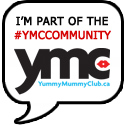By Erin Brown Conroy
“ME!” Those two little letters placed side by side form a powerful word that carries a whole lot of attitude! In my neighborhood growing up, we were no exception; my friends and I used to teasingly refer to ourselves as, “Me, myself, and I.” Though we hung out
with each other, we really only looked out for ourselves. We weren’t unusual; we were typical kids.
It’s no secret that children begin life as “the center of the universe.” Unfortunately, many of those childish perspectives cling tightly to us as we grow older. A “giving spirit” doesn’t come naturally; it has to be purposefully cultivated in order to find its way into our
children’s lives.
God’s Design
God creates helpless infants totally dependant on a loving, caring parent to fulfill his or her physical and emotional needs. Depending on what we receive and how we respond to environments, temperaments, and cultural influences, the “self” in all of us can become either “selfless” or “self-centered.”
As we grow, God designed us to mature in our view of ourselves, moving from selfcenteredness to selflessness. Service and giving to others is the central theme of the gospels. Our ultimate example, Jesus, showed the quintessential act of service and selflessness by giving his up his very life. Contrary to the gospel message, our current culture throbs with inward spotlights pulsating their “me-first” message across the nation and world.
Today’s Culture
Especially today, our culture caters to “self.” Born out of the 60s’ “Do your own thing” and “If it feels good, do it,” advertisements, movies, and television shows continue to cater to the immature longings of youth for self-gratification. Our inner child clings to the
immature attitude of “me first!”
Even though we begin life in a self-absorbed state, the desire of God for us is to gain a more mature mindset that takes the focus off self and onto others. If a young child is to move into true maturity, he or she must continually, systematically learn to shift the focus
from self to others – regardless of cultural influence. It’s up to us, as parents, to create words and actions that facilitate the shift.
Here are some tips for parents that will help foster a giving spirit in a “me-first” culture:
Let your child see you purposefully give of yourself to others.
As parents, we’re our child’s clearest example of either selfishness or selflessness. Beginning with simple actions, what we do shouts loudly of our level of selflessness. Do I open doors for others? Do I let others go in line before me, enter the lane of traffic ahead
of me, or take the last item left on the shelf at the store? Do I let others have the last helping at the meal, graciously step back when there’s a crowd of people traveling in the same direction, or let someone speak before I do? Purposefully choosing to embrace and demonstrate the attitude and action of “giving” is the number one way our child will learn to put others first.
At a very early age, set up regular circumstances for your child to practice giving, and give together.
When do we start teaching our child about giving? We begin when our child is born. When my two oldest children were quite small, we’d go once every couple of months to our town’s homeless shelter and pass out apples. When we had four children, we’d all
regularly visit the nearby nursing home to share Valentines or Christmas cookies we’d made. When we had seven children at home and planned to travel to a Russian orphanage, I took some of the children with me to the local stores to ask for clothing and Band-aids donations. Then we filled a suitcase together before the trip. These are just a few of the many circumstances that we can purposefully create to give of ourselves to others. Even little children can save pennies in a jar for a missionary family or walk the
streets with you on a mission trip. When your children see you consistently practicing giving your time and resources to others, they’ll experience first-hand the value – and positive feelings – of giving.
Speak about and then practice sharing.
The way to begin a personal attitude of sharing is to speak words of generosity and giving. “It’s good to share. It’s wonderful to give to others. It’s a great thing to give of ourselves.” Positive words lead to positive actions. Once spoken, we can help our child find ways to give. “It’s good to share. How can we share this bushel of apples that we just picked?” “It’s wonderful to give to others. How can we give of ourselves to the neighbors that just moved in?” Once we’ve verbally affirmed the positives of sharing and spoken with our children about what can be done, we can then go and do it.
Point out and praise the generosity of others.

Giving is all around us. Verbally affirming others’ generosity teaches our children to recognize generosity; it also gives us new ideas of how to share ourselves with others in the future. Read aloud the newspaper article about a generous individual’s impact on the town. Talk to the kids on the corner volunteering at a car wash/fund-raiser to raise money for the youth group’s trip to Haiti. Visit the ministries in your area that directly touch lives, such as shelters, food kitchens, and food pantries. Notice everyday acts of kindness, affirming the generosity with words such as, “Did you see how that young man opened the door for the older couple? Wasn’t that a kind thing to do?” Make it a practice to find and praise the goodness and generosity all around you.
Make it a priority to purposefully teach your child to be generous. With practice, we can foster a giving spirit in our child, no matter what the culture says.
About the Author
Erin Brown Conroy, MA, is a writer specializing in books on relationship connections, curriculum, and web marketing. She is a freelance writer/consultant, the DL Professor of writing courses for Patrick Henry College, and a Master Teacher for the PHC Prep Academy Online. Erin is also the mom of 13 children by birth, marriage, and adoption and has been homeschooling for 27 years. She lives in Ohio with her husband, five children still at home, and three amazingly-smart (and cuddly) Australian Labradoodles. You can read more of Erin’s articles on parenting at www.erinbrownconroy.com.






















I was just having a discussion the other day about how selfish we are as a society. These tips you’ve given here are modeling the opposite are wonderful!
I meant about modeling, not are.